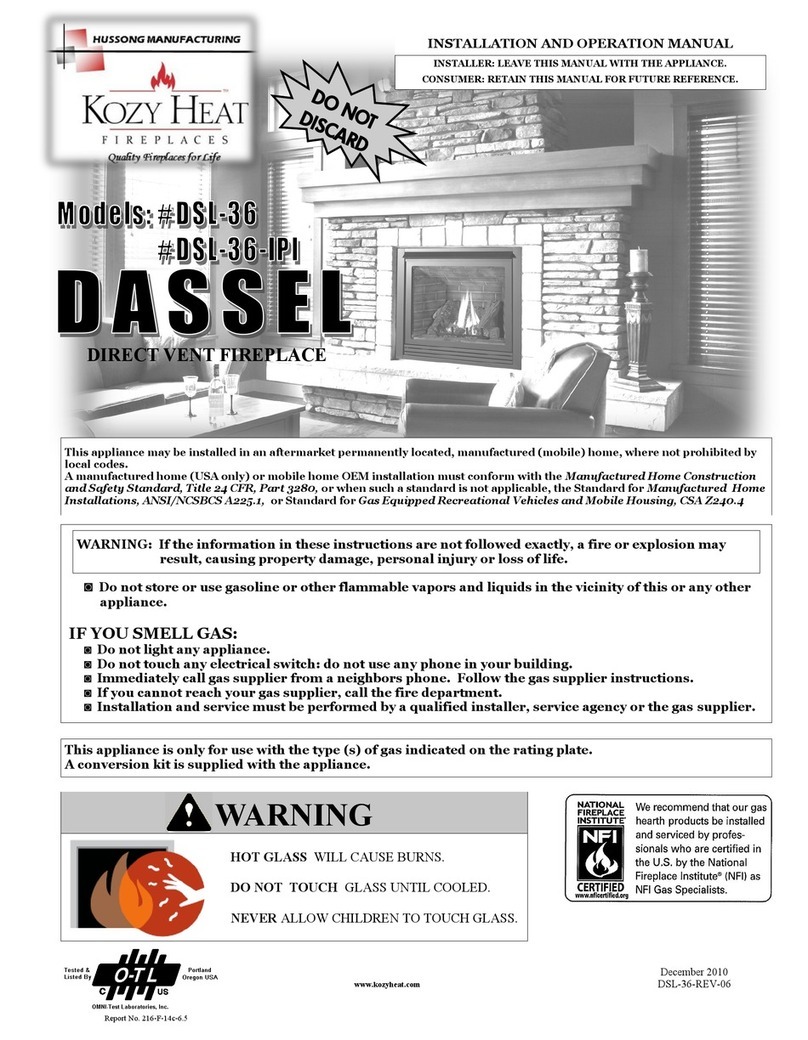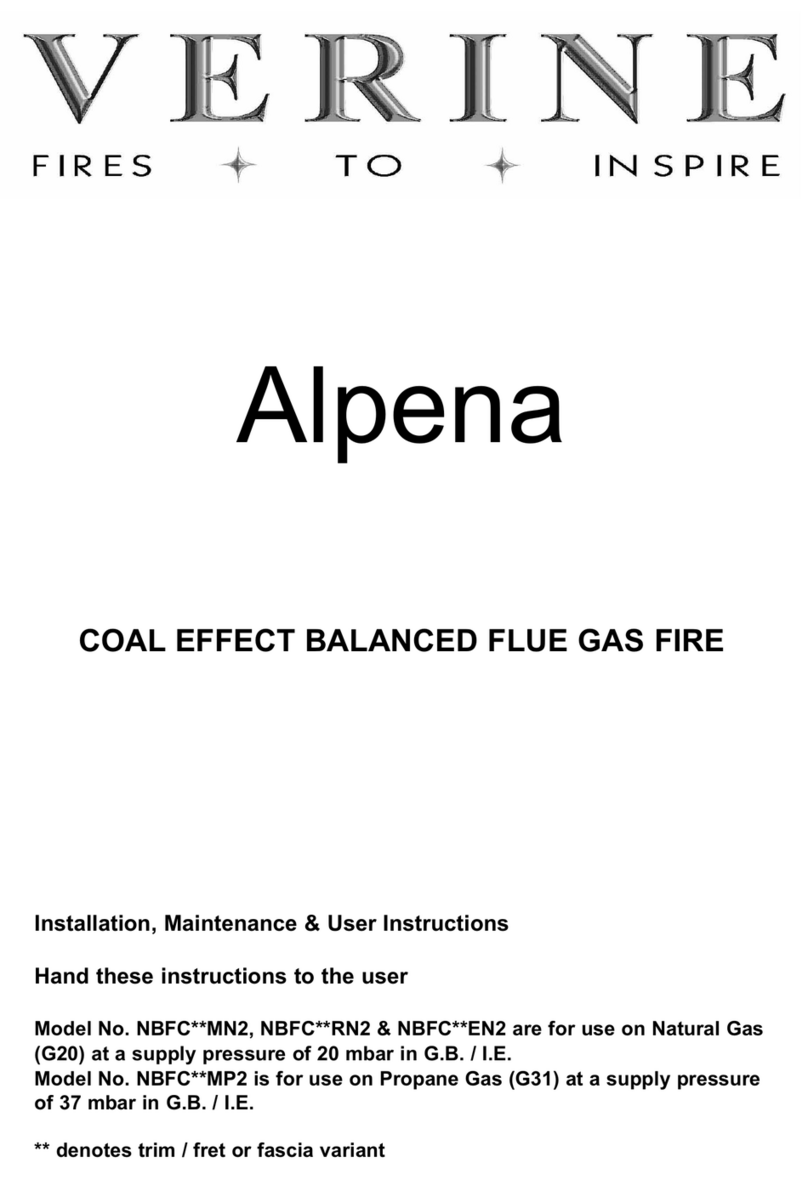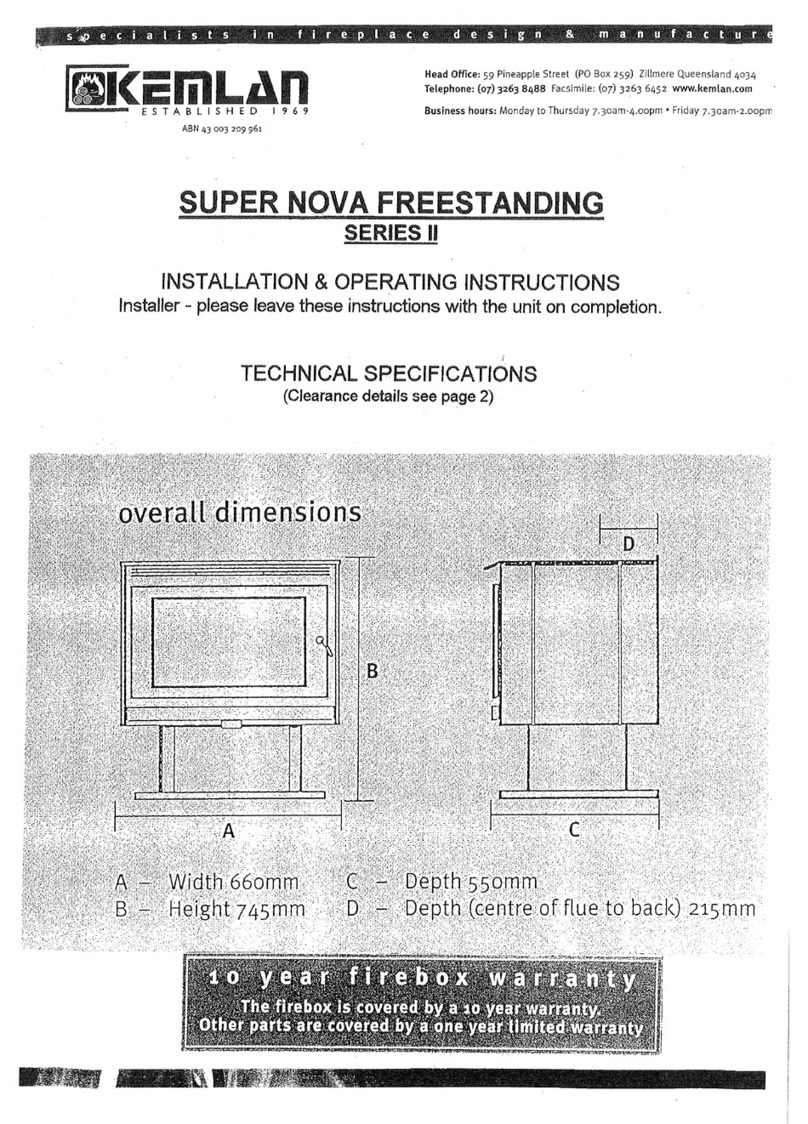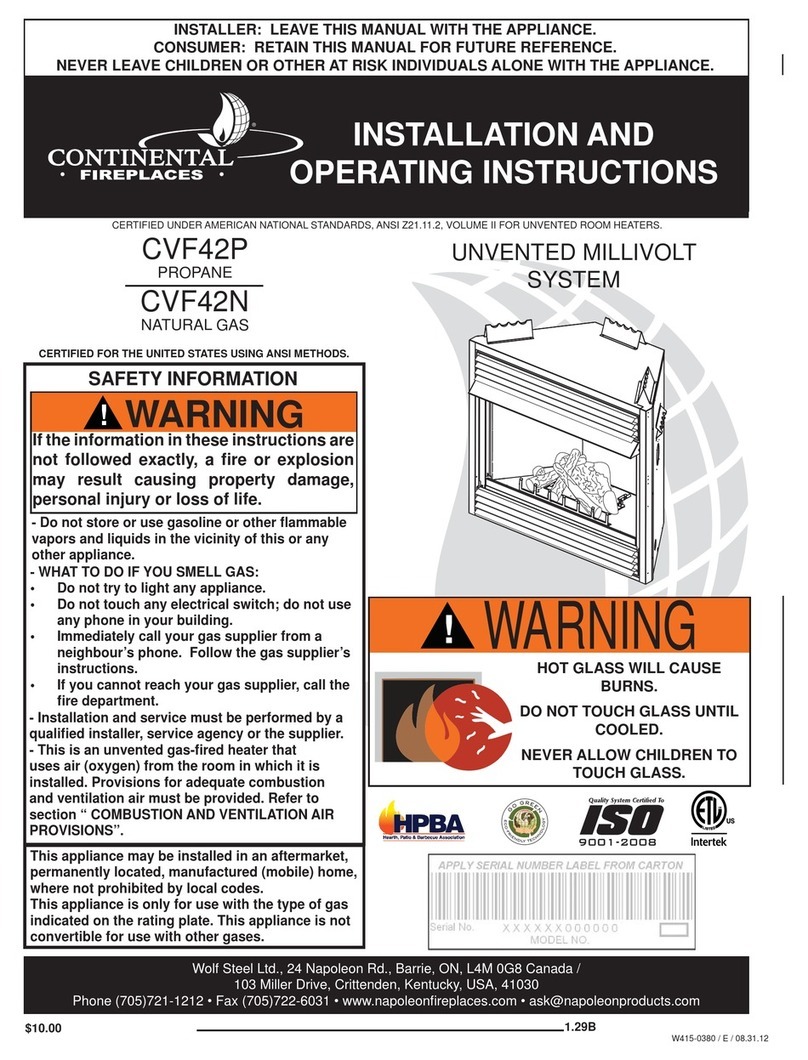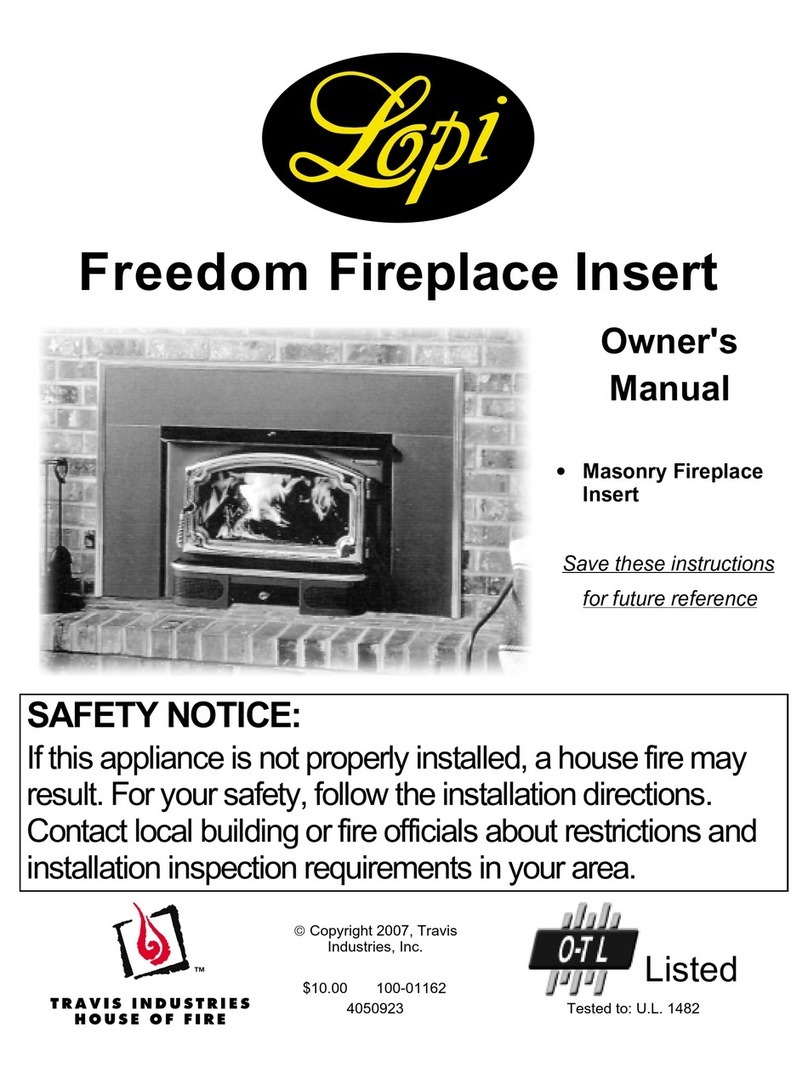
PART 2 SERVICE
DANGER: Be sure the manual Main Shut-Off Valve combination valve and Burner Power Switch are turned OFF before
removing any parts for service.
-6-
11.
12.
13.
14.
15.
= BTU/Hr
= 180,000 BTU/Hr = 180 MBH
control to OFF or thermostat below room temperature for
at least 60 seconds. If burner still fails to light, turn it off
and repeat from step 4. Then, if necessary, refer to the
trouble chart to isolate the problem.
WARNING: Repeated unsuccessful attempts to
light will result in accumulated gases in combustion
chamber. To prevent these gases from reaching an
explosive level, periodically purge the combustion
chamber as described in step 4 above.
8. To make a preliminary setting of the burner input,
determine the manifold gas pressure required from Table
3 and adjust the combination valve main gas pressure
regulator accordingly. See Section XI.
9. To determine the firing rate for NATURAL gas:
Accurately time test dial for the number of seconds for
one revolution and use the following formula. All other gas
utilization equipment must be off.
3600 x test dial size x BTU value
No. of seconds for one rev. test dial
Then divide by 1,000 for MBH value.
Example: 3600 x 1 x 100
20
For PROPANE gas, consult your supplier for method of
determining firing rate.
10. Readjust the primary air shutter to provide a quiet, soft
blue flame with well defined orange and yellow tips for
NATURAL gas or with well defined yellow tips for
PROPANE gas.
Check the operation of the burner; start and stop it
several times with the thermostat or operating control.
With the burner running, check the operation of all limit
and associated controls.
PERFORM THE FOLLOWING FINAL ADJUSTMENTS
for combustion and flue gas temperature. Take the flue
gas samples and temperature immediately ahead of the
draft control.
A. The flue gas temperature should be above 325¡ but
not exceeding 550¡F. Excessive flue gas
temperatures will result in low efficiencies. Low
flue gas temperature may causes excessive
condensation. Reset gas input if necessary to
adjust stack temperature.
B. Make the final setting of the primary air shutter by
checking the flue gases with an ORSAT or similar
combustion testing instrument. The carbon
monoxide content should conform to local codes
or, in their absence, to the level specified in the
United States or Canadian Standard reference on
the front cover of this manual; the carbon dioxide
content should be approxiamately 9.5% for
NATURAL and 12.1% for PROPANE, or within the
limits prescribed by the local codes.
Check the draft control to make sure there is no spillage
of flue products into the room.
FILL OUT THE INSTALLATION ADJUSTMENT DATA
TAG and affix to the burner or gas utilization
equipment.
NOTE: For subsequent normal starting and shut-off
procedure, refer to CONSUMER INSTRUCTIONS or to
the instruction plate mounted on the burner.
outlet pressure of 3.5" W.C. must be installed in the pilot gas
line and the pilot adjustment screw set full open.
Nominal BTU /Cu. ft. Value
NAT-1000 PROPANE-2500
Orifice Diameter .032 .025
Pilot Flame Gas Pressure
3.0"-4.0" W.C.
Approx. Capacity 2400 BTU/Hr.
TABLE 4 Pilot Specifications
X BLOWER ASSEMBLY
Cleaning of the blower wheel is usually the only service
required. Need for cleaning is indicated if the inlet screen or
blower wheel shows an accumulation of dust and lint, or if the
character of the flame indicates a deficiency of air. Motor
cooling air vents if present, should also be cleaned at this time.
■ If the motor must be replaced: Disconnect motor leads,
remove inlet ring and screen, blower wheel and the three
motor mount retainer clips. Pull motor out of keyhole brackets.
Remount in reverse order noting that brass flanges of rubber
motor mounts are located against motor. The wheel should be
located 1/4 inch inside the edge of the inlet side of the blower
housing.
XI COMBINATION GAS VALVE
The 24 volt combination valve serves four functions: 1) Main
Manual Gas Shut-Off, 2) Manifold gas pressure regulation, 3)
Automatic electric pilot gas valve, and 4) Automatic electric
redundant main gas valve. A pilot adjustment screw and filter
are also included.
■ The pilot adjustment screw is located on the combination
valve. Remove plug for access and turn clockwise to
reduce flow.
■ The main gas pressure regulator, which has an outlet
pressure setting range of 2.0 " to 4.0 " W.C. is factory set for a
IX DRAWER ASSEMBLY
When the pilot flame gas pressure is in the proper range (see
Table 4), lint, dust, or corrosion is the most common cause of
pilot problems.
■ The retention plate and pilot are part of the drawer
assembly which can be removed as a unit. Remove the four
back plate screws; then, disconnect the pipe union, pilot tube
and control wires and pull out the drawer assembly.
■ When servicing, clean the retention plate ports and pilot
assembly including the pilot spud and electrode porcelain on
sensor rod and/or spark electrode. Examine the sensor rod. If
there is any serious corrosion or loss of metal at the tip replace
the sensor rod.
■ Make sure that the pilot mica peepsight is not damaged or
missing as air leakage through the peepsight hole could mimic
some of the conditions described below. See Figure 7.
■ Check that the pilot orifice diameter is correct.
■ Make sure that the burner tube is properly positioned in the
combustion chamber entry. It must be set flush to 1/4" short of
the inside of the combustion chamber as shown in Figure 2 or
3. It must not protrude into the combustion chamber.
■ If cleaning does not eliminate the lighting problem, further
checks are required:
CAUTION: Do not indiscriminately increase pilot
orifice diameter. Pilot troubles are rarely cured in this
manner and new troubles may be introduced by causing
the pilot flame to float and lose contact with the sensor
rod.
■ If the standby gas pressure is over 14.0" W.C., or less than
4.0" W.C., refer to Section VI.
■ If the standby gas pressure is between 4.0" W.C. and 14.0"
W.C. and does not vary more than 1.0" W.C., use the pilot
adjustment screw in the combination valve (Section XI) to set
the pilot flame gas pressure at 4.0" W.C.
■ If the inlet pressure varies more than 1.0" W.C., a 1/8 inch
Maxitrol RV12 series(or equal) pressure regulator set for an










